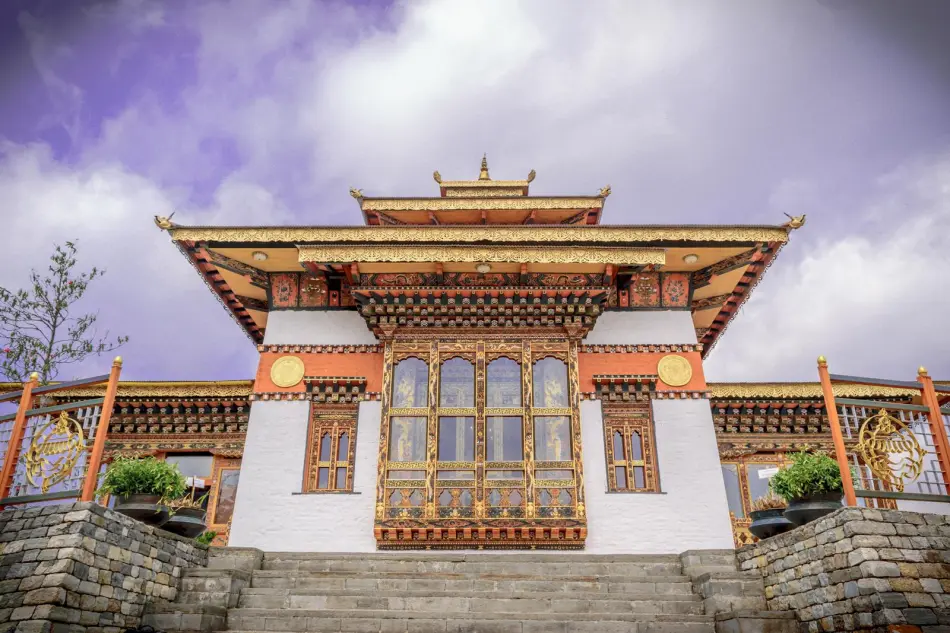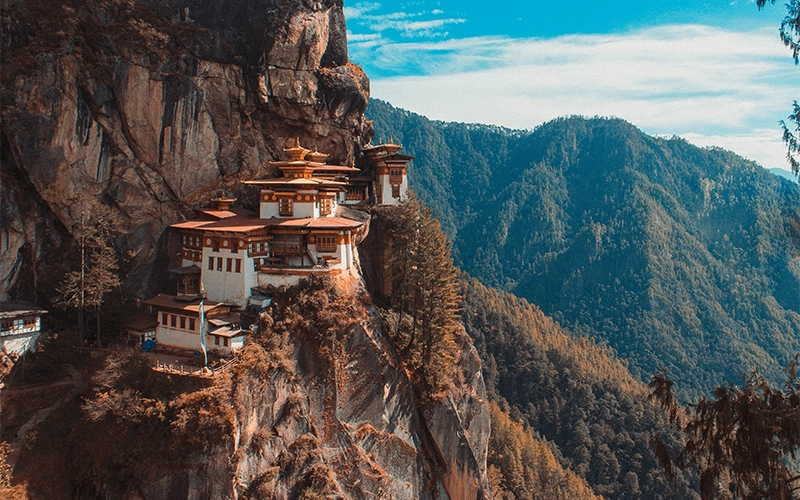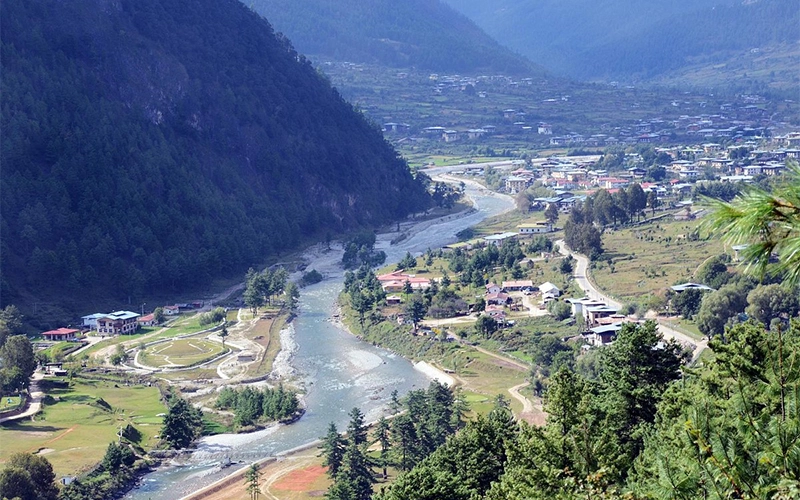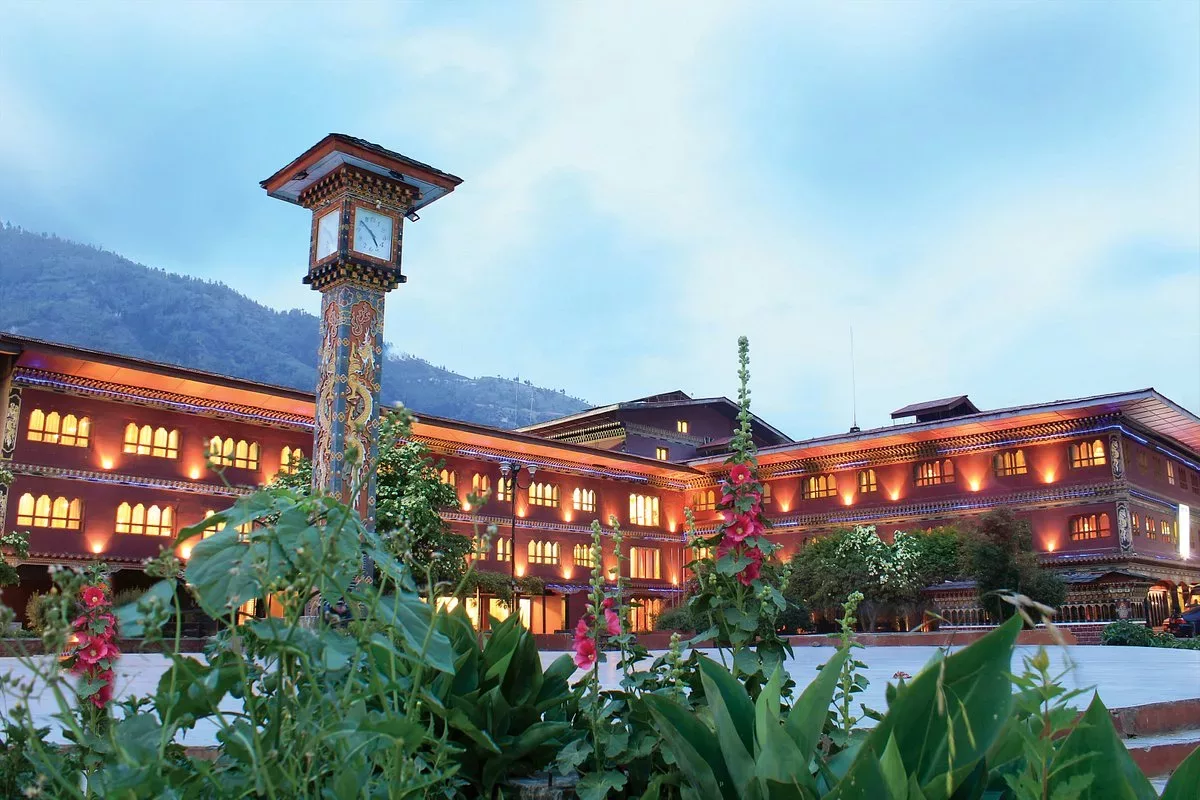Punakha, once the capital of Bhutan, is a charming destination located at an elevation of 1,200 meters. Known for its pleasant climate and scenic beauty, Punakha enjoys four distinct seasons: Spring, Summer, Autumn, and Winter. Each season offers a different experience, but certain times of the year stand out for visitors. Let’s explore the best times to visit Punakha for a memorable trip.

Spring (March to May) – The Best Time to Visit Punakha
Spring in Punakha, lasting from March to May, is considered the best time to visit the region. During this season, the area is covered with a colorful blanket of blooming flowers, making the landscape incredibly beautiful. The weather is warm but not too hot, making it perfect for outdoor activities like trekking and exploring the region’s natural beauty.
Highlights of Spring:
– Ideal weather for trekking and sightseeing.
– The region is filled with blooming flowers, making it visually stunning.
– The famous Punakha Dromche festival takes place during this period, offering a unique cultural experience.
Autumn, from September to November, is another prime season to visit Punakha. The rice harvest reaches its peak during this time, and the region turns golden with fields of ripe rice. Clear blue skies and the crisp mountain air provide stunning panoramic views of the surrounding landscapes. This season offers the perfect weather for exploring the area and indulging in outdoor activities.
Highlights of Autumn:
– The rice fields turn golden, creating picturesque scenery.
– The clear skies provide breathtaking views of the Himalayan peaks.
– Ideal for sightseeing, photography, and cultural exploration.
Winter (December to February) – A Good Time for Trekking
Winter in Punakha, spanning from December to February, is generally mild compared to other parts of Bhutan. Punakha does not experience heavy snowfall, so the weather is warmer compared to northern Bhutan. This makes it an excellent time for trekking and exploring the outdoors. The reduced number of tourists during this off-season means that visitors can enjoy a quieter, more peaceful atmosphere.
Highlights of Winter:
– Warmer temperatures compared to northern Bhutan.
– Great visibility for trekking and exploring.
– Fewer tourists, leading to less crowded attractions and potential discounts on accommodation.
Summer (June to August) – A Low-Cost Season
Summer in Punakha, from June to August, is the monsoon season, with occasional rain showers. While temperatures can rise up to 32°C, the evenings tend to be cooler. Despite the rain, this period is considered an off-season for tourism, which means lower hotel rates and fewer crowds. If you don’t mind the occasional rain, summer can still be a pleasant time to visit, especially if you enjoy a quieter travel experience.
Highlights of Summer:
– Occasional rain showers, keeping the region lush and green.
– Lower accommodation rates and discounts on various tourist services.
Recommended Itinerary for Your Punakha Trip
Here’s a suggested 7-day itinerary to make the most of your visit to Punakha and nearby Bhutan attractions.
Arrive at Paro International Airport, where your Bhutan journey begins. Upon arrival, you will be greeted by your guide and transferred to Thimphu, Bhutan’s capital city. The drive to Thimphu takes approximately 1.5 to 2 hours, offering scenic views of the Bhutanese countryside. Once in Thimphu, check in to your hotel and take some time to rest. In the afternoon, visit Tashichho Dzong, a beautiful fortress-monastery that houses Bhutan’s administrative offices. You will also visit the National Memorial Chorten, dedicated to the late King Jigme Dorji Wangchuck. End your day with a peaceful evening in Thimphu.
Day 2: Thimphu Sightseeing
After breakfast, head out for a full day of sightseeing in Thimphu. Begin with a visit to the Buddha Dordenma Statue, a gigantic bronze Buddha statue located on a hilltop with panoramic views of the valley below. Next, visit the Motithang Takin Preserve, where you can spot the national animal of Bhutan, the Takin. Later, explore the National Folk Heritage Museum and Textile Museum to learn about Bhutan’s rich cultural heritage and traditional crafts. In the afternoon, you will have time to explore the local markets, where you can shop for handicrafts, textiles, and Bhutanese artifacts. Return to your hotel in the evening and relax.
Day 3: Thimphu to Punakha
On Day 3, you will begin your journey to Punakha, a historical town located in central Bhutan. The drive to Punakha is about 3 to 4 hours, taking you through the Dochula Pass (3,100 meters). At the pass, you can enjoy breathtaking views of the Himalayas and explore the Dochula Monastery with its 108 chortens (stupas). Continue your journey to Punakha, where you will visit the majestic Punakha Dzong, one of the largest and most beautiful dzongs in Bhutan. It is located at the confluence of the Pho Chhu and Mo Chhu Rivers and holds historical significance as it was the seat of the government until the 1950s. After your visit, check into your hotel and relax for the evening.
Day 4: Punakha Sightseeing & Return to Paro
Today, explore more of Punakha’s beautiful surroundings. Start with a visit to the Chimi Lhakhang, also known as the Temple of Fertility, located on a hilltop. This sacred temple is dedicated to the famous lama, Drukpa Kunley, and offers stunning views of the Punakha valley. Afterward, you will visit the Khamsum Yulley Namgyal Chorten, a beautiful and lesser-known temple perched on a hill above the Mo Chhu River. In the afternoon, begin your journey back to Paro, where you will check into your hotel for the night. On the way, enjoy the scenic views of the Bhutanese countryside.
Day 5: Paro – Taktsang Monastery (Tiger’s Nest Trek)

After breakfast, prepare for one of Bhutan’s most iconic treks: the hike to Taktsang Monastery, also known as the Tiger’s Nest. This stunning monastery is perched on a cliff 900 meters above the valley floor and is one of the most famous landmarks in Bhutan. The hike is challenging but rewarding, offering spectacular views of the surrounding valleys and forests. Once you reach the monastery, enjoy the serene atmosphere and explore the various temples. After descending back to Paro, relax and unwind at your hotel, reflecting on the unforgettable experience of visiting this sacred site.
Day 6: Paro Sightseeing
On Day 6, explore the charming town of Paro. Begin by visiting the Rinpung Dzong, a fortress-monastery that houses the district monastic body and government offices. The dzong offers beautiful views of Paro and is also known for its traditional Bhutanese architecture. Afterward, visit the National Museum of Bhutan, located in the former Paro Ta Dzong (watchtower). The museum showcases the country’s rich cultural heritage, including artifacts, art, and historical exhibits. In the evening, take a leisurely stroll through Paro’s main street to shop for souvenirs and enjoy local delicacies.
Day 7: Paro to Haa Valley

On this day, take a scenic drive to the beautiful Haa Valley, one of Bhutan’s lesser-explored areas. The drive to Haa Valley takes about 2 to 3 hours, offering stunning views of the surrounding mountains and traditional Bhutanese villages. Upon arrival, visit the Lhakhang Karpo and Lhakhang Nagpo, two sacred temples with historical significance in the valley. You will also have time to explore the traditional architecture and peaceful landscapes of the Haa Valley. After a day of exploration, return to Paro for the night.
Day 8: Departure from Paro
On your final day, after breakfast, transfer to Paro International Airport for your departure. If time permits, you may have a chance for last-minute shopping or sightseeing before your flight back home, concluding your memorable 7-night, 8-day Bhutan tour.
This itinerary offers a perfect blend of cultural exploration, natural beauty, and iconic Bhutanese experiences, allowing you to fully immerse yourself in the magic of Bhutan’s landscapes and traditions.


